Best of India Tours
- Golden Triangle Tour- Best of India & Nepal
- Classical Rajasthan
India Cultural Tours
- Images of North India- Karnataka Heritage
- Rajasthan & Goa Tour
Discover India Tours
- Grand India Tour- North to South India
- Central to South India
Rajasthan Tours
- Classical Rajasthan Tour- Golden Triangle Tour
- Grand Mughal Tour
India Luxury Trains
- Palace on Wheels- The Golden Chariot
- India Deccan Odyssey
- The Indian Maharaja
- Royal Rajasthan on Wheels
Nepal Tours
- Glimpses of Nepal- Buddhist Pilgrimage
- Nepal River Rafting
- Destinations of Nepal
- Nepal General Info
India Wildlife Tours
- North India Wild Life- South India Wildlife
Tibet Tours
- Tibet Monastery Tours- Explore Tibet
- Destinations of Tibet
Spa & Yoga Tours
- Ananda in Himalayas- Yoga & Meditation
Adventure Tours
- Manali Safari Tour- Himalayan Trekking
- Horse Safari
Bijapur
Aihole
![]() Badami
Badami
![]() Bangalore
Bangalore
![]() Belur
Belur
![]() Bijapur
Bijapur
![]() Coorg
Coorg
![]() Halebid
Halebid
![]() Hampi
Hampi
![]() Hassan
Hassan
![]() Hospet
Hospet
![]() Mysore
Mysore
![]() Nagarhole
Nagarhole
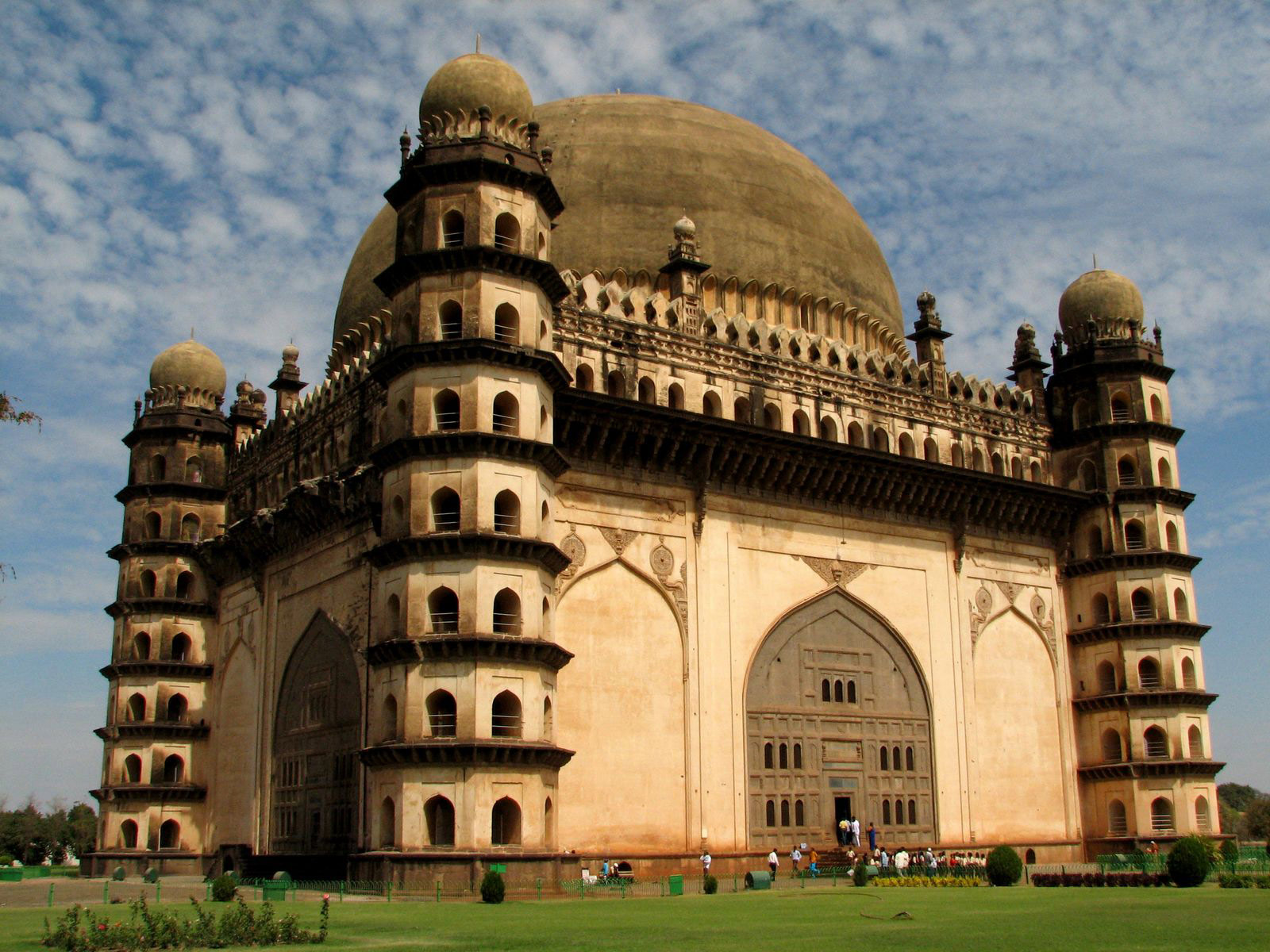
Known for its medieval monuments, including the world famous Gol Gumbaz, Bijapur is located in the southern state of Karnataka. Known for their architectural excellence, most of the monuments of Bijapur are built by the Adil Shahi rulers between 15th and 17th century. The Adil Shahi Dynasty was contemporary of the great Mughals in Delhi, Elizabethan rule in England, and Shah Abbas in Persia. And like their contemporaries, the Adil Shahi rulers also ushered in the golden era for Bijapur. The buildings were built from the local basalt, which have a dull brown monochromatic effect, and are simply splendid. In a city still unspoilt by the soulless multi-storeyed blocks, the sun always sets behind a grand dome or an elegant minaret.
Sightseeing
Excursions
Bijapur is a part of North Karnataka, a region that is steeped in history of great rulers who not only fought with courage and expanded their empires but also excelled in the fields of art, culture, and music. The region was a centre of excellence in architecture and there are structures all around that give a glimpse of its grand past. Aihole and Badami saw some of the most beautiful structures being created during the Chalukyan Era. Gulbarga is the district headquarters known for its association with the Bahamani kingdom in medieval times. Asavana Bagevadi and Kundalasangama are two places associated with the great social reformer and poet Saint Basaveshwara in the early medieval age.Excursions for Bijapur
Gol Gumbaz
The most important attraction in Bijapur, Gol Gumbaz is an architectural wonder and the largest dome in the world. The dome dominates miles of area by its sheer size and it is difficult to suppress the urge to see the dome once you are there. With a height of 51 metres and diameter of 37 metres, the entire structure has been raised on a wall whose thickness is 3 metres. The cenotaph of Muhammad Adil Shah (1627-56) lies under the dome. Unsupported by any pillar, the dome is an engineering marvel. The acoustical system is fantastic and your slightest whisper would be echoed seven times. Apart from the dome, there are supporting structures including a mosque, a drum house and guesthouses.
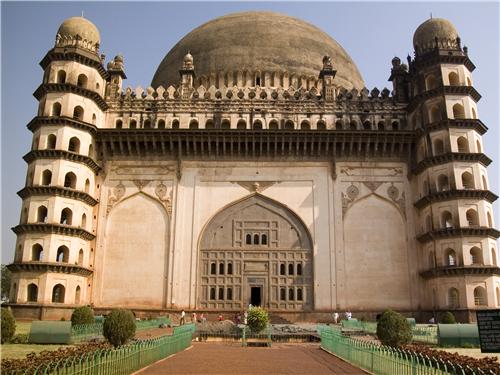
Ibrahim Roza
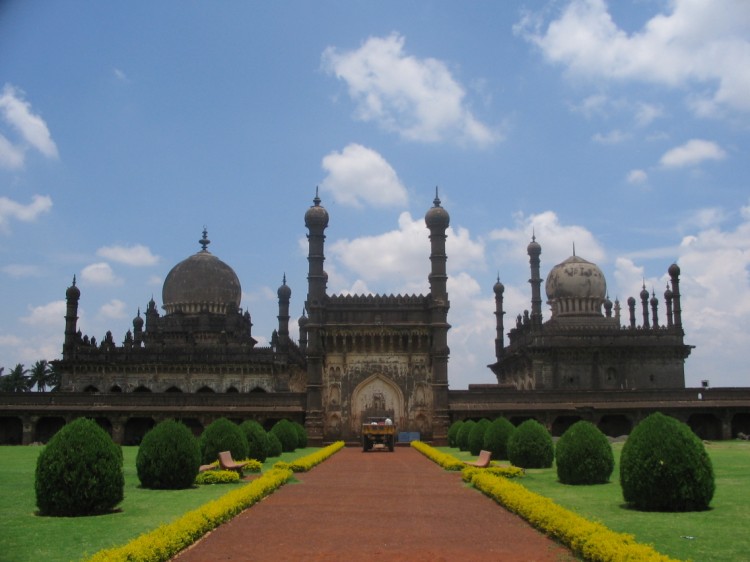
Though Gol Gumbaz is a better-known structure, the most splendid structure in Bijapur is, however, the Ibrahim Roza and the accompanying mosque. The tomb of the illustrious Adil Shahi Sultan Ibrahim II (1580-1627), the structure has been lavishly praised by the art historians as well as the common tourists alike. Cousens called the Roza /”the Taj Mahal of the Deccan,/” while for Ferguson it was /”far excelling than anything of the sort on this side of the globe/”. The tomb is built to perfection and is an example of unstinting technical care and skilled artistry without any equals. The tomb has remarkable proportions, with elegant cupolas and slender minarets, parapets cornices adding the necessary decorative touches.
Jama Masjid
Built in 1686, during the rule of Adil Shah I, the Jami Masjid of Bijapur is a stately structure that is sober and massive. The huge dome of the Masjid is onion-shaped and rests on the beams of a grand hall divided into 45 compartments. The Mughal Emperor Aurangzeb made some additions to the original corridors on the northern and southern sides and put a gateway on the eastern side.
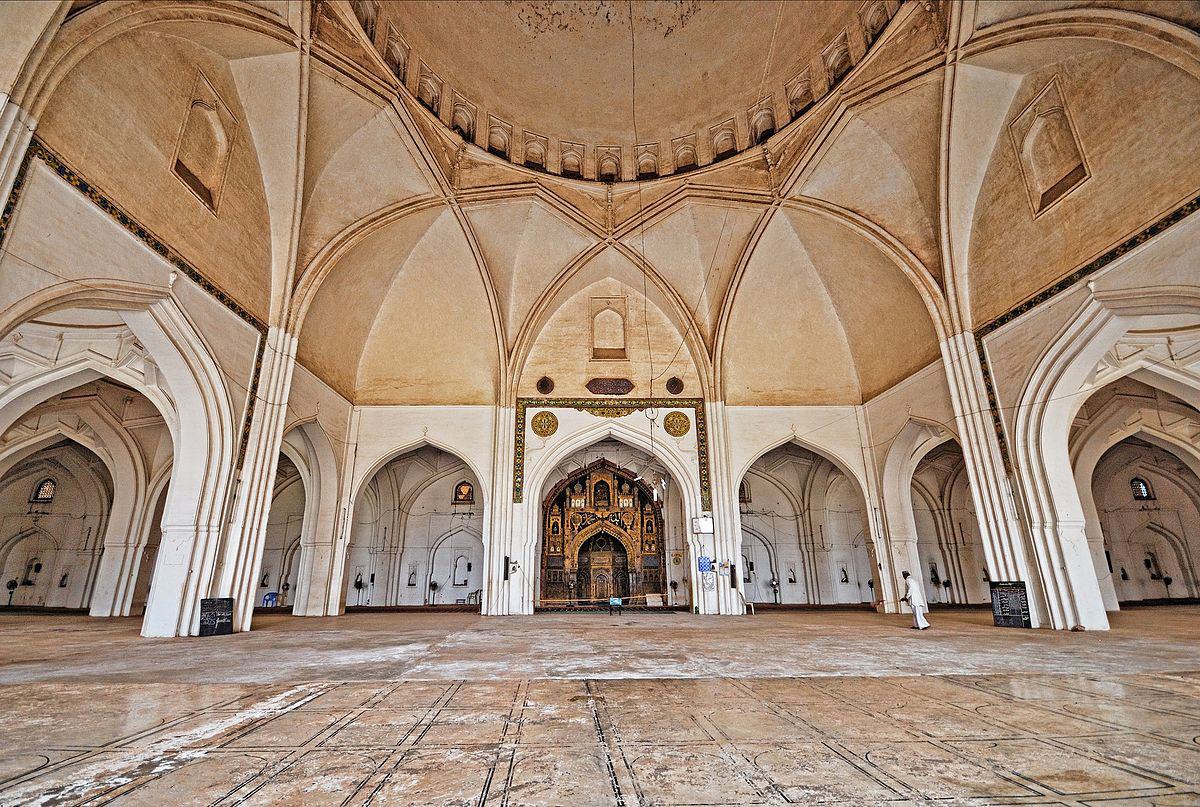
Gagan Mahal
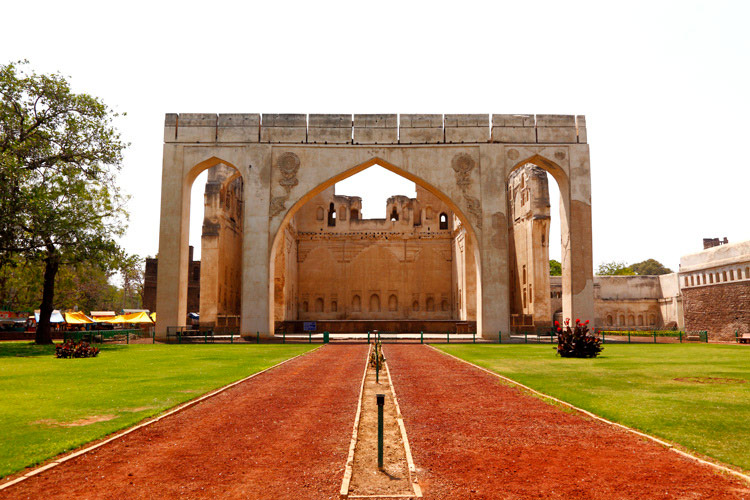
Gagan Mahal was built by Adil Shah I (1561) as a part of the palace-cum-audience hall. The central arch of Gagan Mahal is the widest and tallest in entire Bijapur. Most of the structure is now in ruins, but even the remnants are magnificent and impressive. The ruins of the Mahal are now part of a beautiful park.
Sat Manzil
Sat Manzil or the seven-storeyed tower near the Gagan Mahal is now mostly in ruins. Originally the structure was a watchtower overlooking the bastions, the moat girdling, and the ramparts of the citadel.
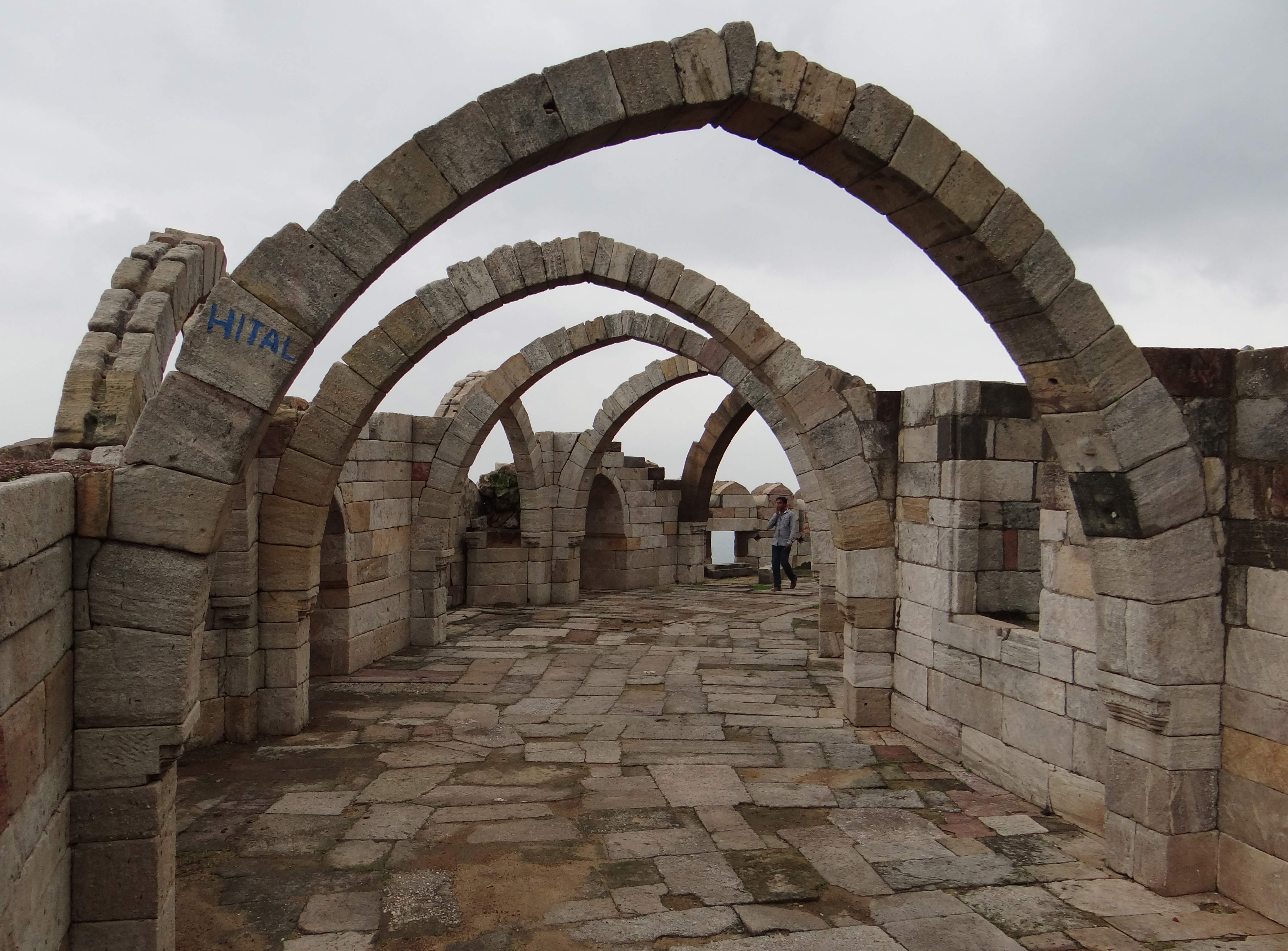
Jala Manzil
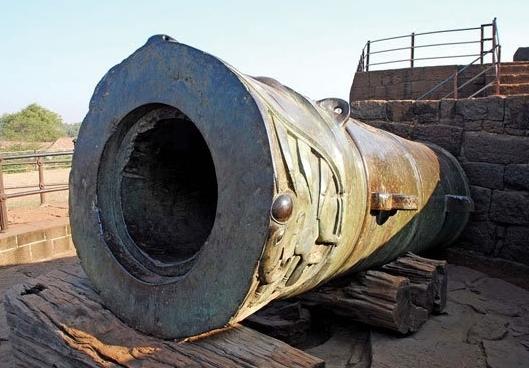
Close to the Sat Manzil is a small structure called Jal Manzil (water palace). It is set in a tank and a part of the zenana enclosure.
Taj Bawdi
Close to the Roza lies Taj Bawdi, built by Ibrahim II in memory of his wife. Two octagonal towers flank the giant gateway leading to the water tank which is still in use, a great relief during summer months.
Mehtar Mahal
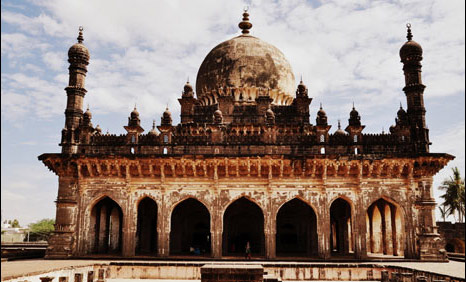
Mehtar Mahal is a small but exquisite structure that you just can/’t miss while going to the old city. Built in the Indo-Saracenic style, this is an extremely ornate structure with brackets supporting the balconies and trelliswork so impressive that it recalls the splendour of the Italian Quattrocento.
Malik-E-Maidan
One unusual attraction in the city is the Malik-e-Maidan (monarch of the plains) canon, placed on the city walls and one of the largest surviving bell-metal canons in the world. The cannon weighs 5,500 kilograms and is 4.5 metres in length. Cool to touch even under scorching sun, it was mounted by Muhammad Adil Shah on its present position.
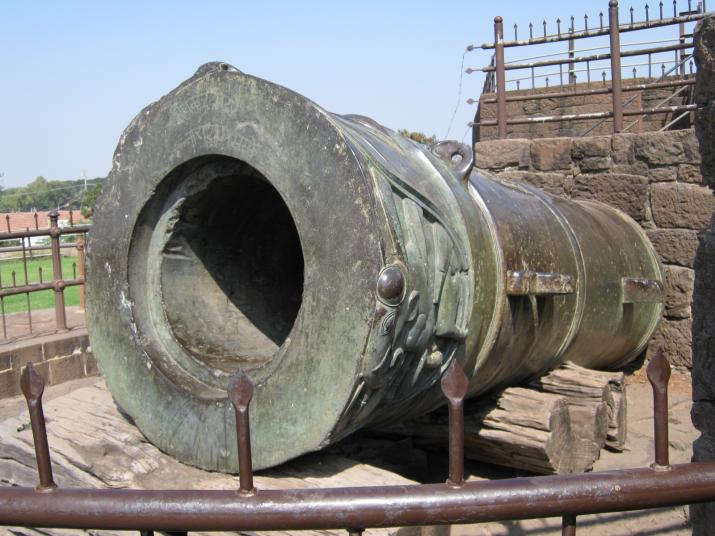
Asar Mahal
Asar Mahal was also built by Muhammad Adil Shah where he kept two hairs of Prophet Muhammad for devout Muslims. It is a five-arched façade—a grand building in Bijapur.
Bijapur Castle
The 16th-century Bijaipur Castle entices tourists with its location right next to a wildlife sanctuary where leopards and wild boar, blue bulls and spotted deer roam free. Built by Rao Shakti Singh, the younger brother of Maharana Pratap Singh in the 16th century, the castle is being run as a heritage hotel by the Bijaipur royal family now. The castle provides excellent lodging facility with an option of jeep safari in the nearby villages and opportunity to enjoy the traditional Mewar hospitality. A must visit site of Bijaipur.
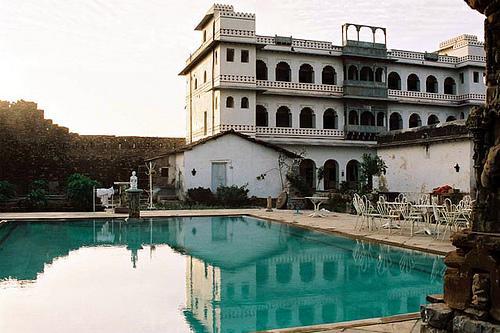
Villages
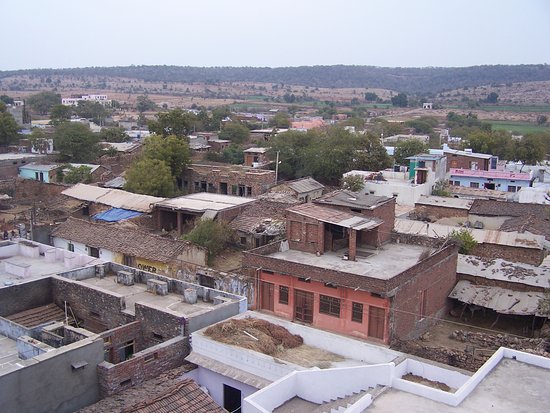
The villages near Bijaipur are also worth a visit. The provision of jeep safari from the Bijaipur castle makes them easily accessible. The villages are characterised by the surrounding of the green hills and the hospitable people. They are inhabited by tribal communities like Bhils, Gadia Lohar (Rajasthani blacksmiths), Kalbeliyas (snake charmers), and Banjara (gypsies). The people wear colourful costumes and live in houses made of clay, stones and wood.
Pangarh Fort & Lotus Lake
Around 25 kilometres from Bijaipur is the picturesque 12th-century Pangarh Fort. The fort overlooks the beautiful Lotus Lake where the local tribal population harpoons fish in their traditional way.
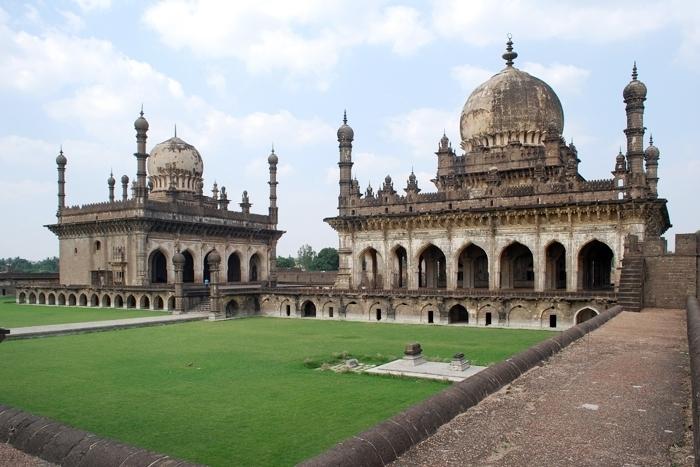
Mekadatu
The word Mekadatu literally means Goat/’s leap in the local language. The name of the place has an interesting legend related to it. According to the legend, the holy river Arakavathi flows into a ravine narrow enough for a goat to leap across. Hence the name Mekadatu. The river Arakavathi flows through a deep gorge only to make the confluence with the river Cauvery where you can also visit the Hindu temple of Lord Sangameshwara.
Aihole
Along with Badami and Pattadakal, Aihole completes the third dimension of Chalukyan architectural centres. Situated some 129 km off Bijapur, the place had an important position during the rule of the Chalukyas. There are a number of richly carved Hindu temples constructed in the 6th and 7th centuries. Some of the important temples of Aihole are Lad Khan Temple, the Meguti Temple, and the Durga Temple. There is also a small museum run by the archaeological department that showcases objects found in Aihole, mostly of the Chalukyan era.
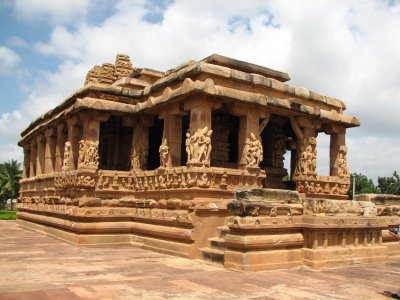
Asavana Bagevadi
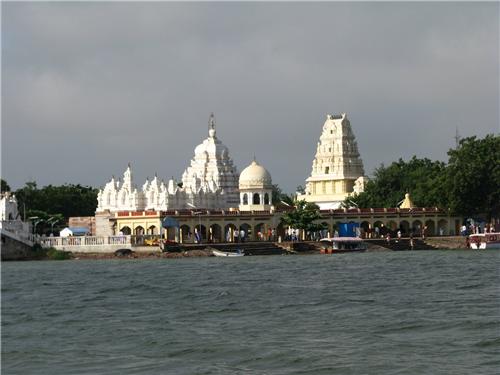
The birthplace of Saint Basaveshwara, Asavana Bagevadi is a famous pilgrimage situated at a distance of 43 km from Bijapur. The place is well known for its temples.
Badami
The capital of the ancient South Indian kingdom of the Chalukyas, Badami is situated in North Karnataka near a beautiful red sandstone ridge. The main attractions of Badami are its rock-cut temples, the Agastyatirtha Tank, Bhootnath Temple, Archaeological Museum, Jambulinga Temple, and Badami Fort.
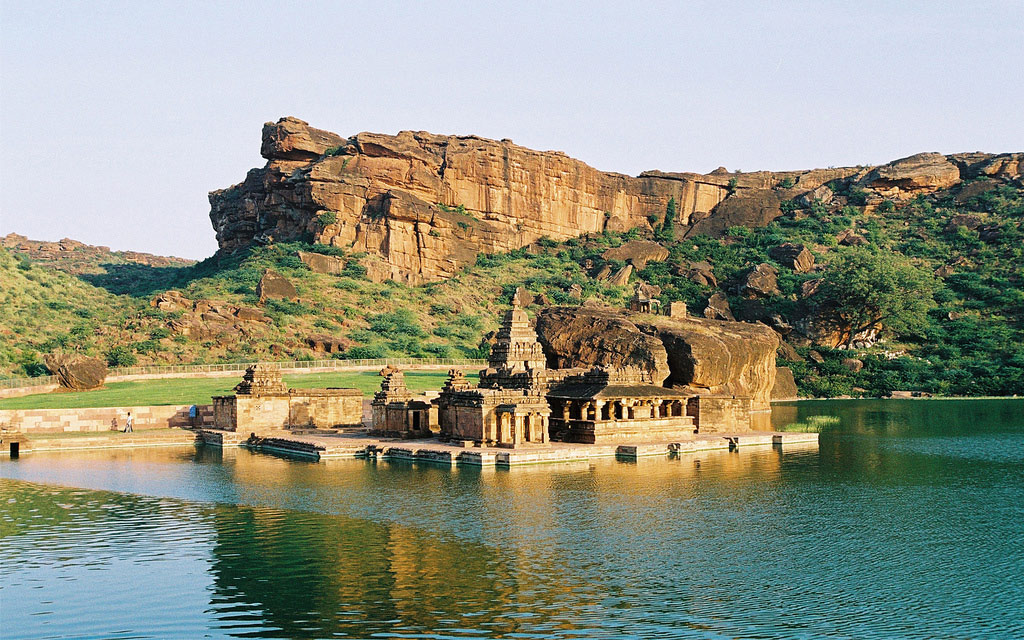
Gulbarga
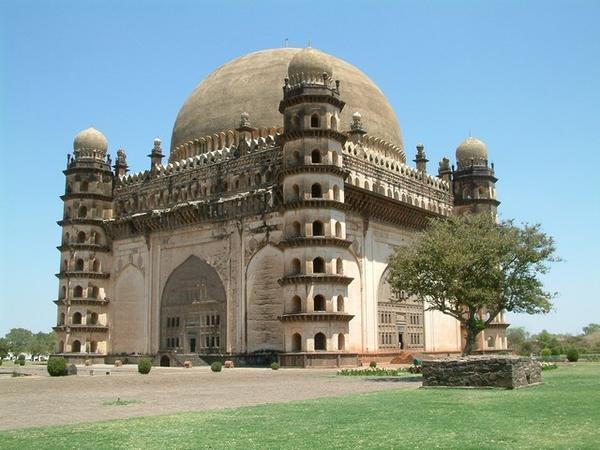
Situated at a distance of around 150 km from Bijapur, Gulbarga is known for its association with the mighty Bahamani kingdom. The main attractions of Gulbarga are the Gulbarga fort, the Jama Masjid, tombs of Bahamani kings and the tomb of Hazrat Gesu Nawaz.
Kundalasangama
Kudalasangama is an important pilgrim centre associated with social reformer and poet-saint Basaveshwara of the 12th century. Kudalasangama is situated around 67 km away from Bijapur.
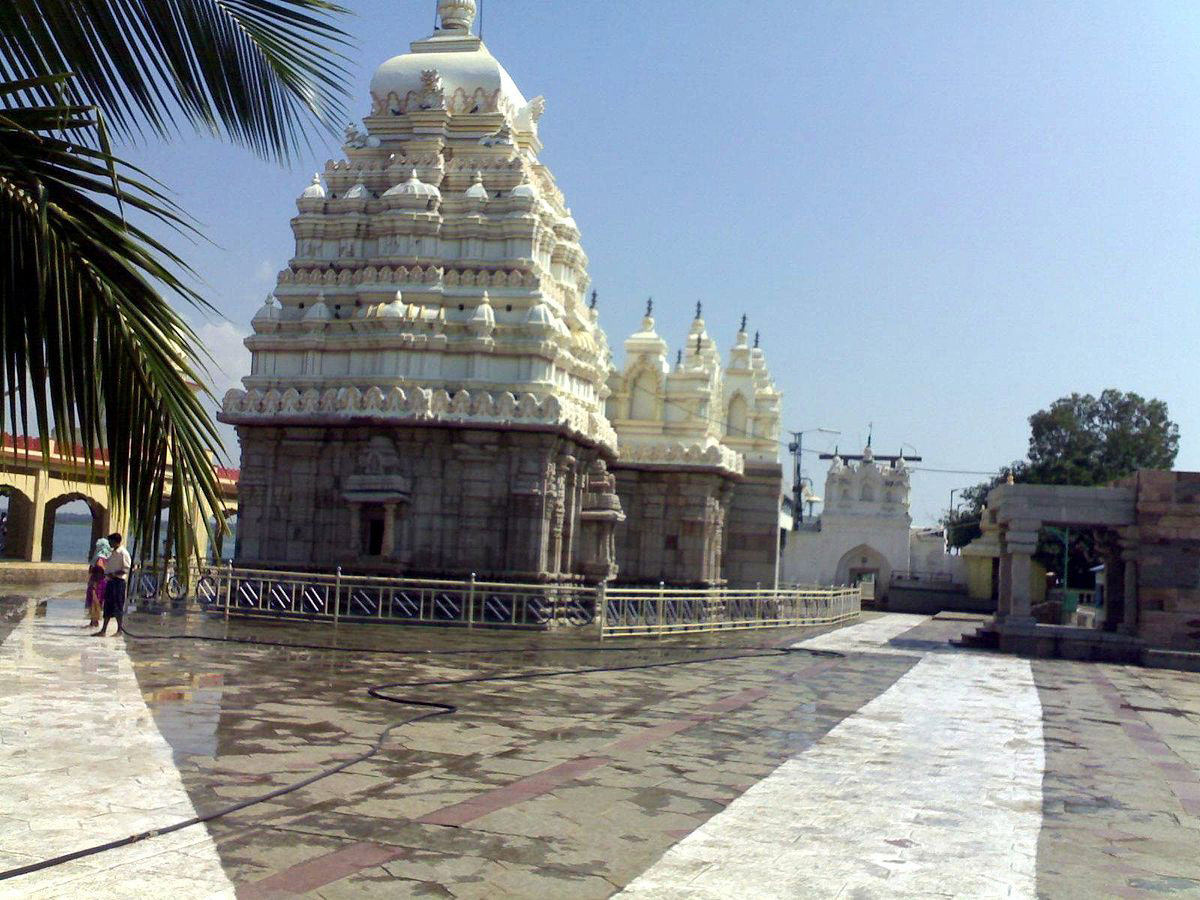
Fact File
 Area: 5.36 sq. km
Area: 5.36 sq. km
 Population: 193,131 (1991)
Population: 193,131 (1991)
 Altitude: 480 m above sea level
Altitude: 480 m above sea level
 Best Time to Visit:All through the year
Best Time to Visit:All through the year
 Languages:Kannada and English
Languages:Kannada and English
 STD Code: 08532
STD Code: 08532




